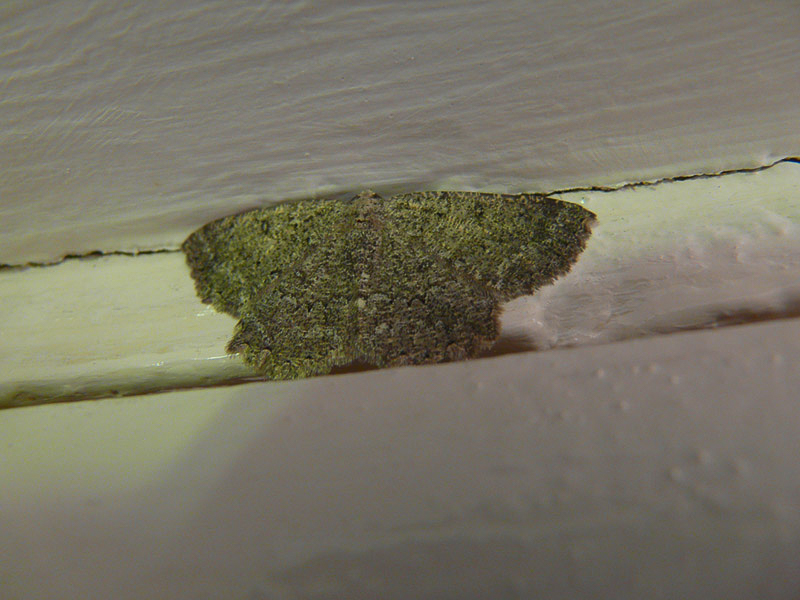
Photo © Radu Chibzii
Charissa obscurata, the annulet or Scotch annulet, is a moth of the family Geometridae. The species was first described by Michael Denis and Ignaz Schiffermuller in 1775. It is found in most of Europe including the European part of Russia and in Asia Minor, the Caucasus , Armenia and Azerbaijan. In the mountains it rises up to 1800 meters. The habitat is rocky dry grasslands, boulder corridors, quarries as well as rocky steppe heaths and wine-growing areas.
The wingspan is 27-32 mm. It is a variable species, whose ground colour generally reflects the area it inhabits. It is whitish or pale grey in limestone and chalky districts. Darker forms are found in areas with peaty soils. The circular O marks on all four wings are typical but may be vague. The forewings have strongly toothed lines, whose which continue on the hindwings. The margin of the large hindwing is very heavily ruffled and incised, which differ from other species of Charissa moths. The larva is smooth and grey-brown.
Adults are on wing from July to August.
The larvae feed on various herbaceous plants, including Calluna species, Viscaria vulgaris, Sedum telephium and Rubus species.
The British entomologist Albert Brydges Farn (1841-1921) wrote to Charles Darwin on 18 November 1878 about his observation that colour variations in the annulet moth related to soil colour. He suggested this was an example of "survival of the fittest", and added that he had found dark moths on a chalk slope where foliage had been blackened by smoke from lime kilns. This was an early observation of industrial melanism, but Darwin does not seem to have responded.
Source: Wikipedia
The primary larval foodplants are Common Bird's-foot-trefoil (Lotus corniculatus), Common Rock-rose (Helianthemum nummularium), Creeping Cinquefoil (Potentilla reptans), Heather (Calluna vulgaris), Kidney Vetch (Anthyllis vulneraria), Salad Burnet (Poterium sanguisorba ssp. sanguisorba), Sea Campion (Silene uniflora), Shining Crane'sbill (Geranium lucidum), Thrift (Armeria maritima), Wild Strawberry (Fragaria vesca) and Wild Thyme (Thymus drucei).